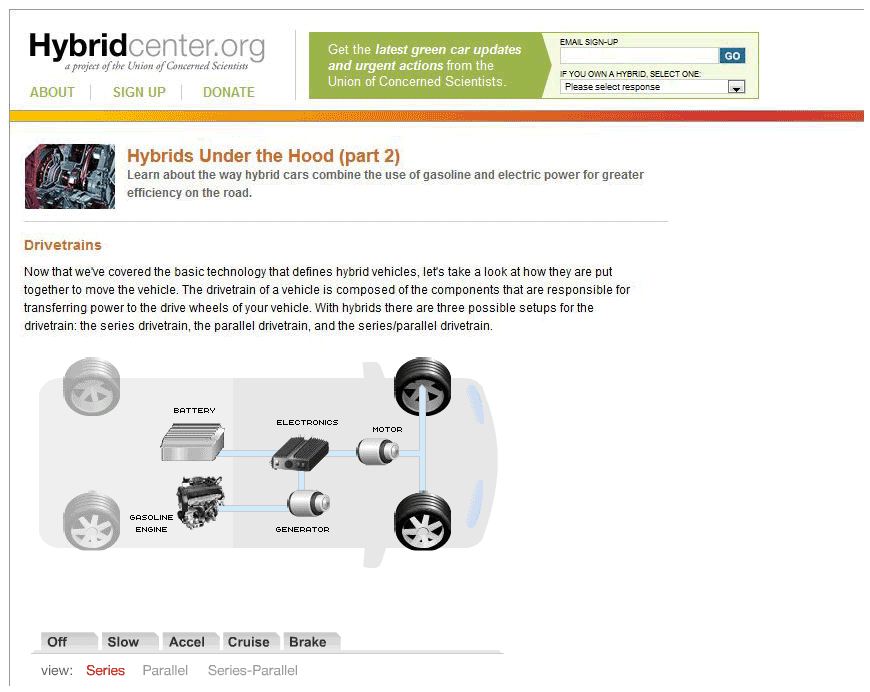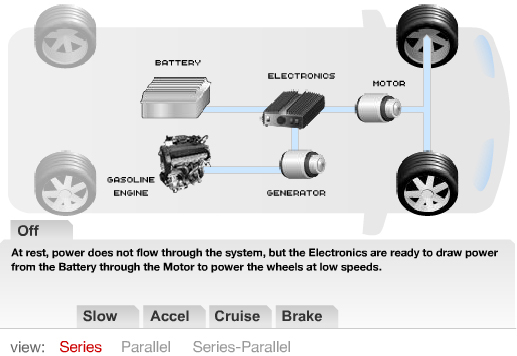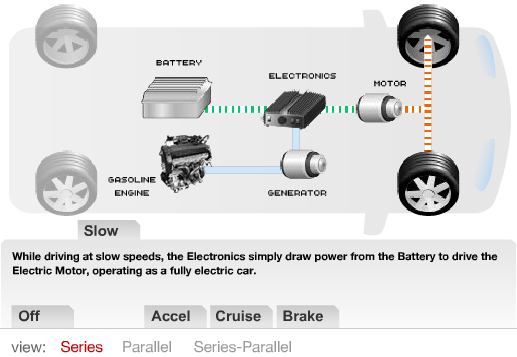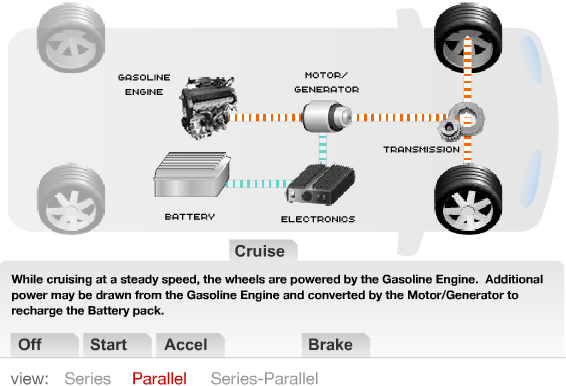Hybrids Under the Hood (Part 2), Hybridcenter.org, Union of Concerned Scientists
Hybrids Under the Hood (Part 2), Hybridcenter.org, Union of Concerned Scientists
Mechanism Description Using Interactive Graphics
Interactive graphics provide an efficient way to convey information about a mechanism or a complex process. As users click through the parts of a system or the steps of a process, they can see the changes without continually needing to scroll down to new pictures or to download new pages of information. Many interactive graphics include animation; some animations might run continuously.
This example of a mechanism description is from a website that explains how hybrid automobile engines work. It requires users to click on tabs to see how the engine responds to typical phases of driving a car: starting the car, accelerating the car, cruising at highway speeds, and applying brakes to stop. This example includes animated lines to show the directions in which types of energy travel as the car runs.

Courtesy of Union of Concerned Scientists
Explore the graphics and consider the questions below. Then “submit” your responses.

Question 1.1
1. Click through some of the tabs and views of the interactive graphic at left. In what ways do the tabs and buttons function as you expected? In what ways do they differ from your expectations? How might the creators of this graphic have made it easier for you, as a reader, to understand how to use the graphic?

Question 1.2
2. Compare the moving red lines with the moving green lines. What does each color represent, and how do you know?
Question 1.3
3. Read the introductory paragraph, “Drive trains,” which precedes the graphic. What information does this introduction provide? How effectively does it introduce or explain the graphic? How might the introduction be improved?
Question 1.4
4. The section “Parallel Drive train” describes the situations in which a parallel hybrid is most efficient (highway driving) and least efficient (stop-and-go traffic). The most efficient operation is depicted on the “Cruise” tab. How could you depict the least efficient operation? Describe changes you could make to the graphic to depict what happens in stop-and-go traffic.
Question 1.5
5. Read the conclusion to this description. What purpose does it serve? How effective is this conclusion, and how might it be improved?

